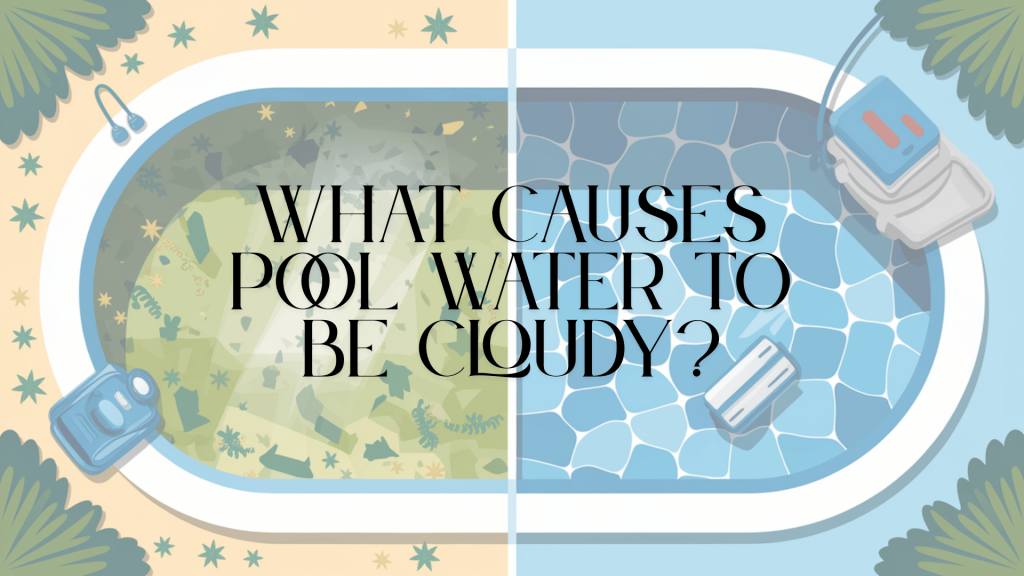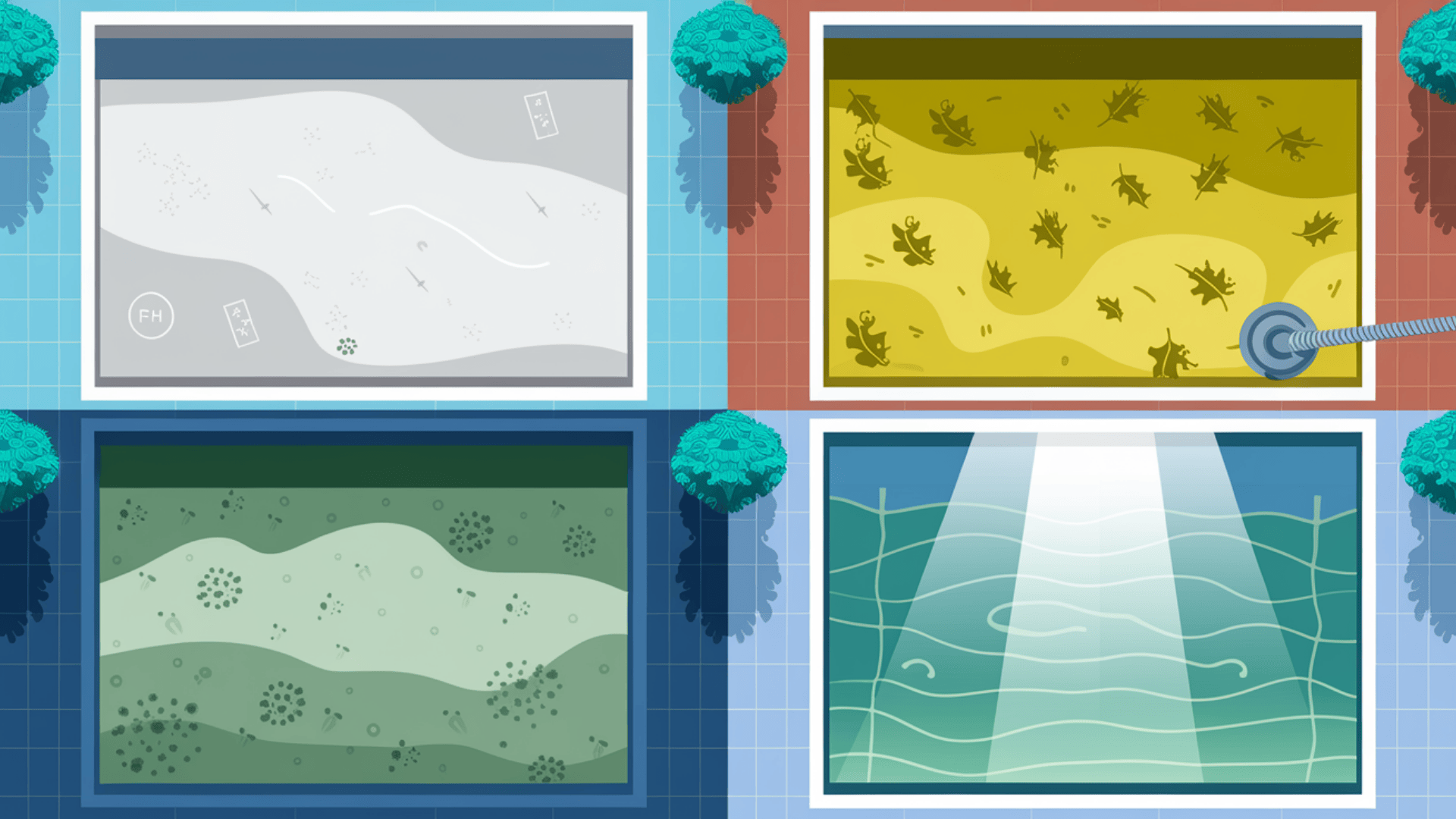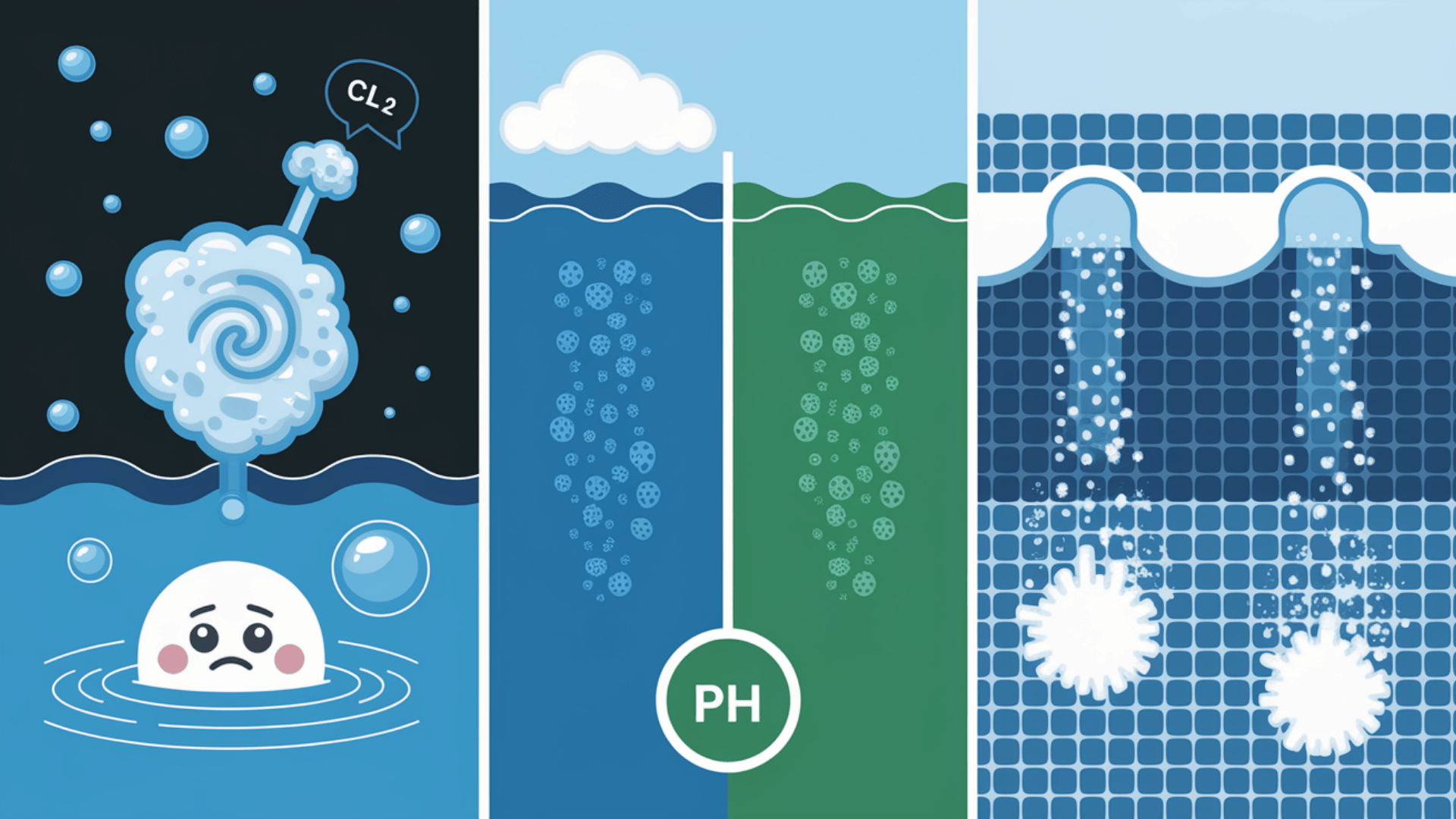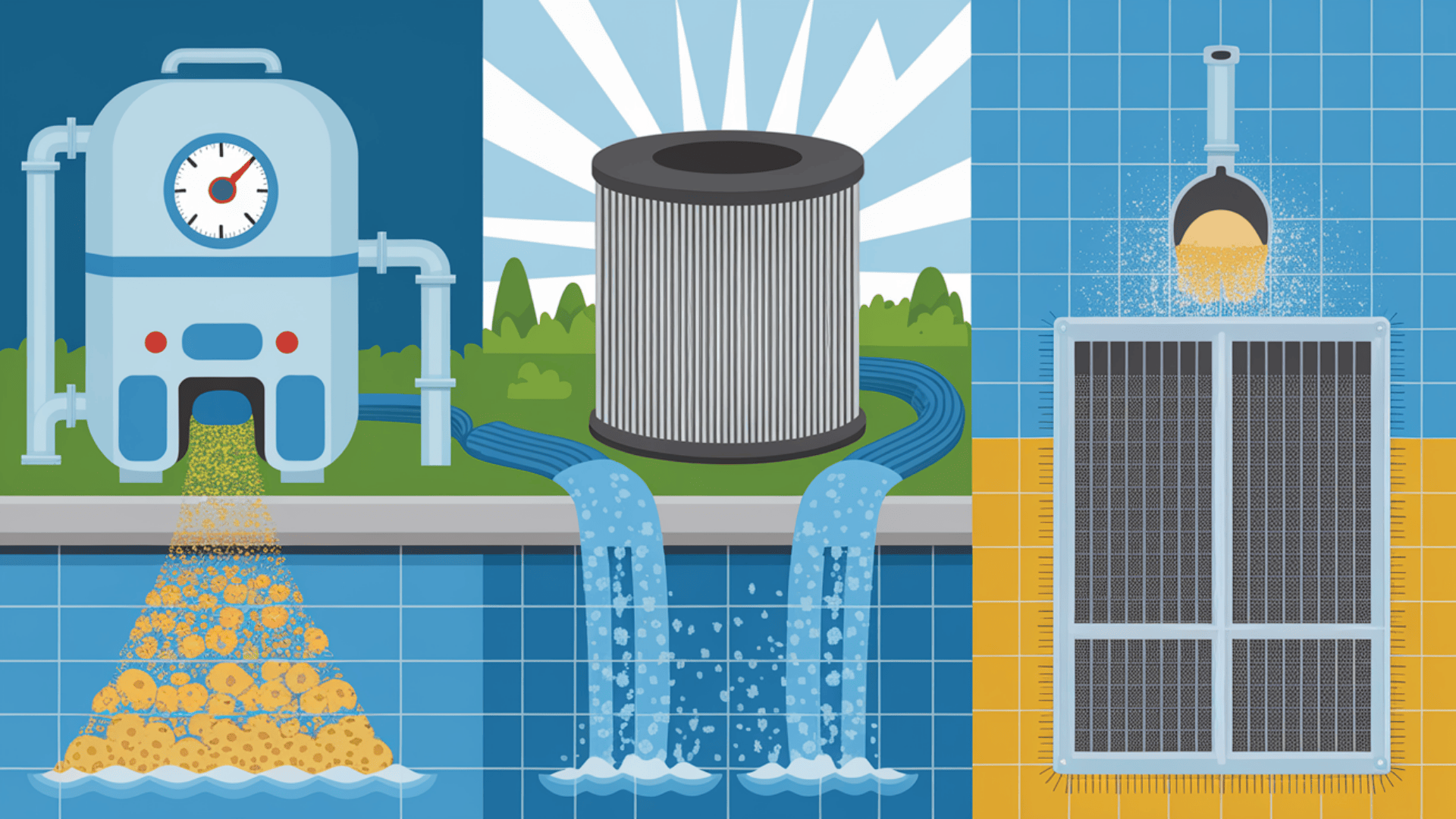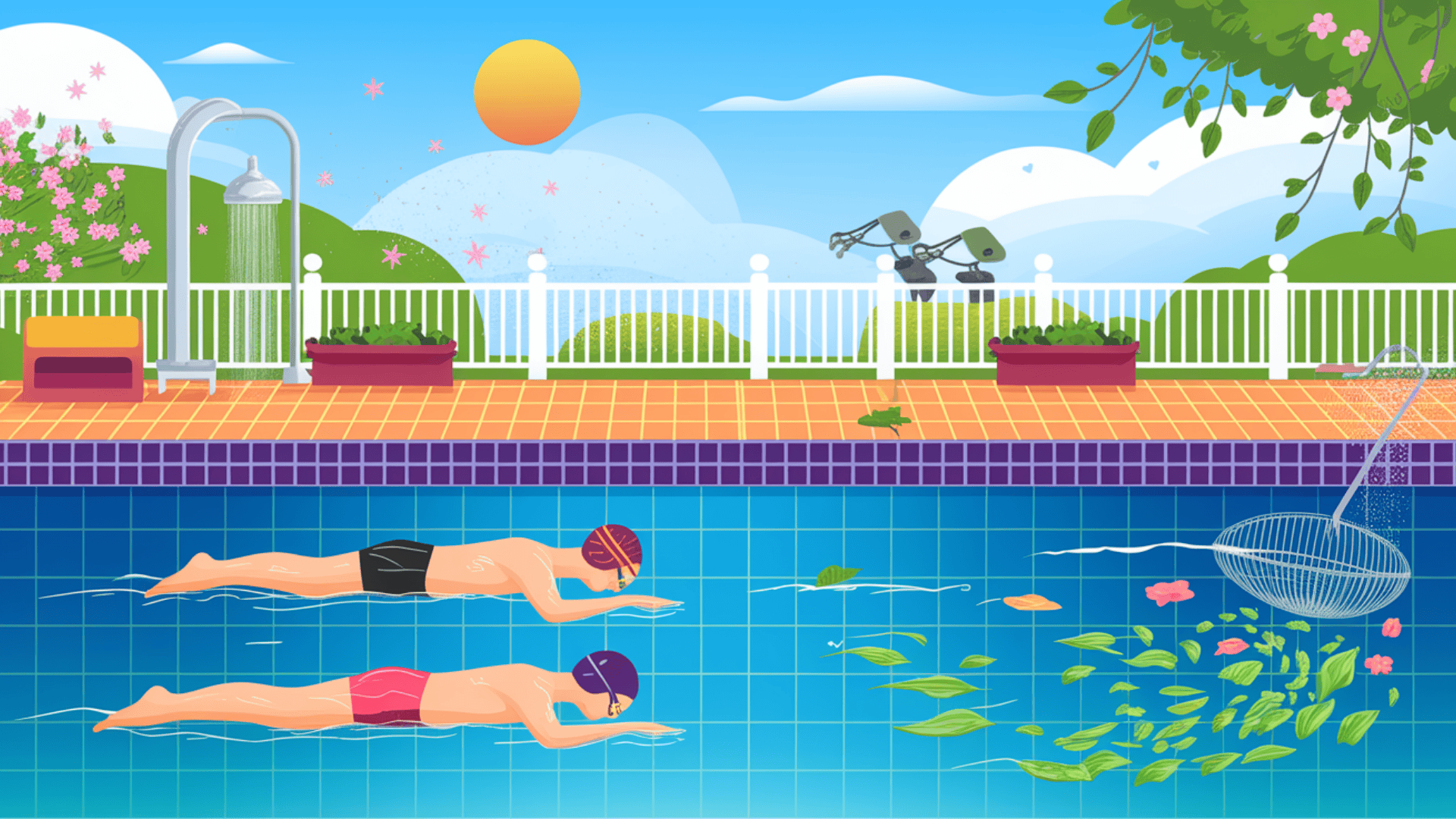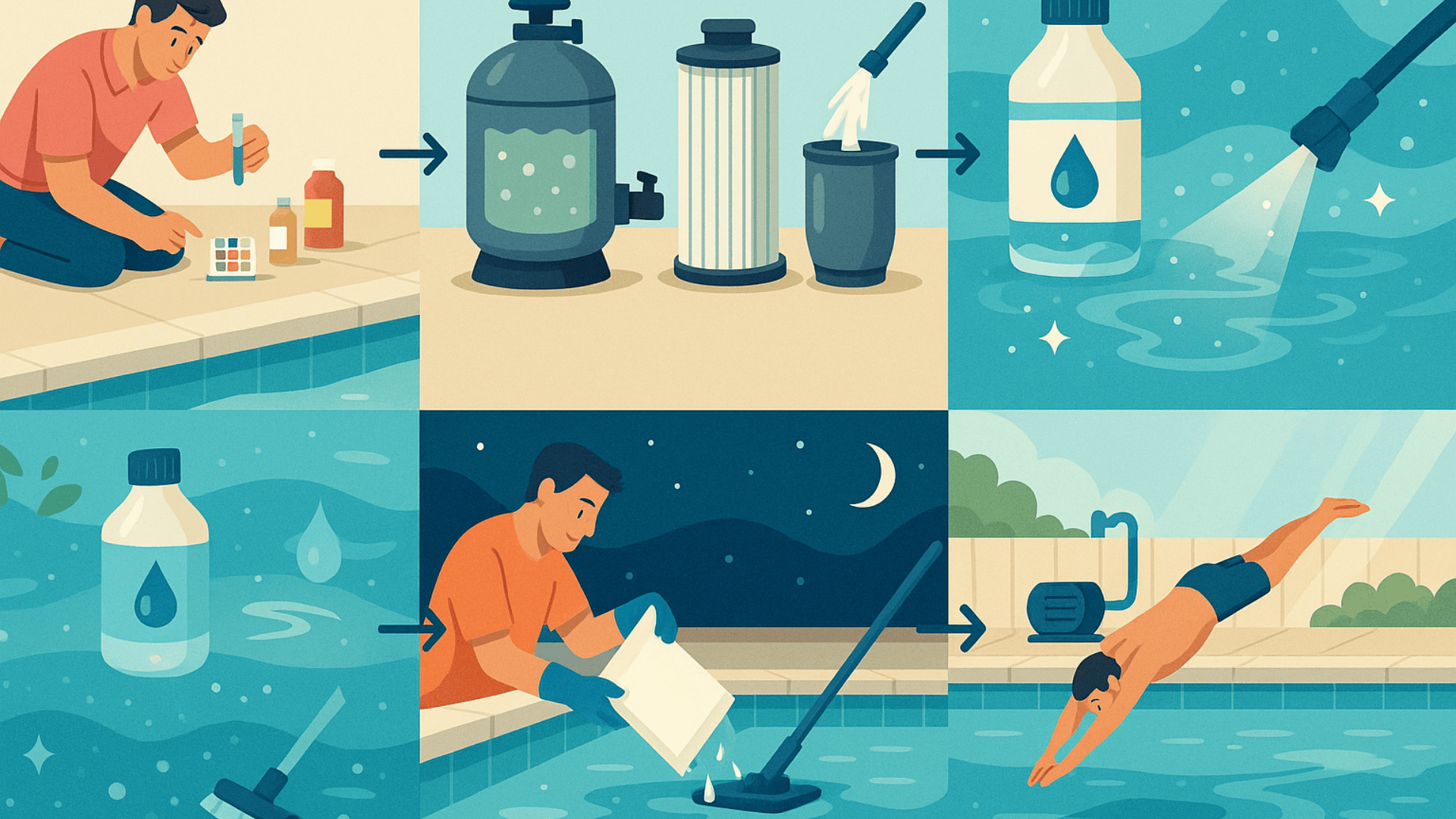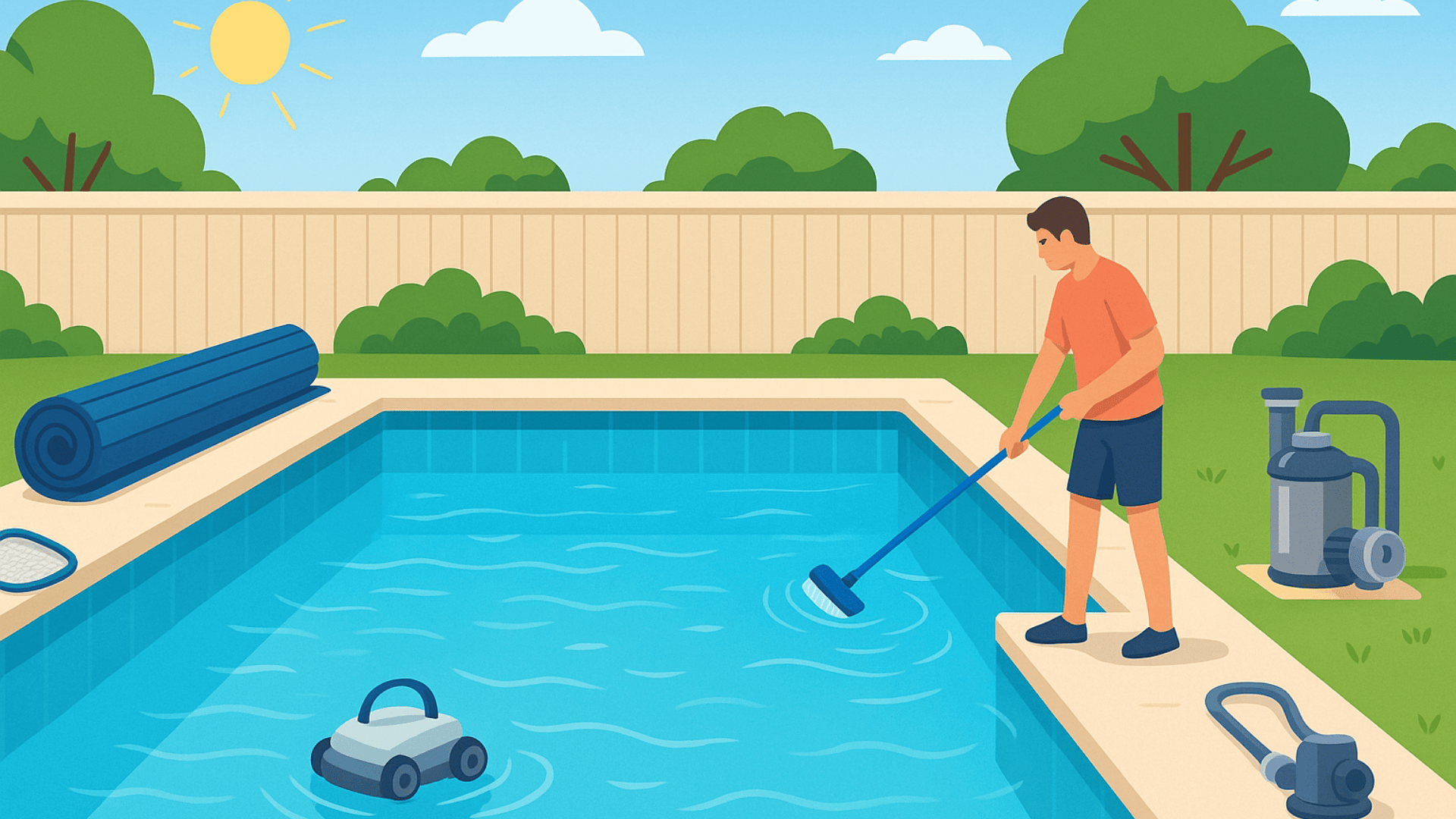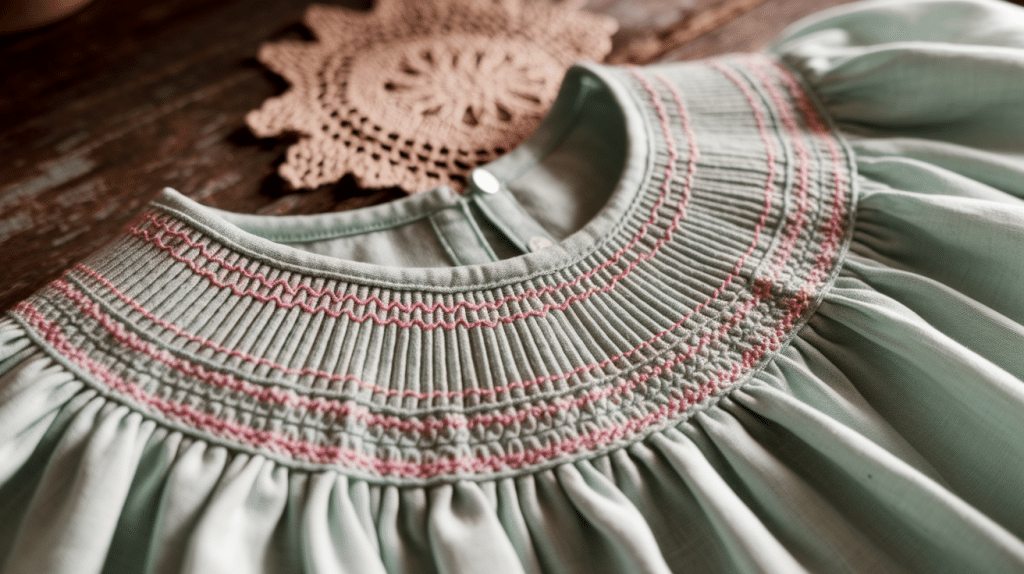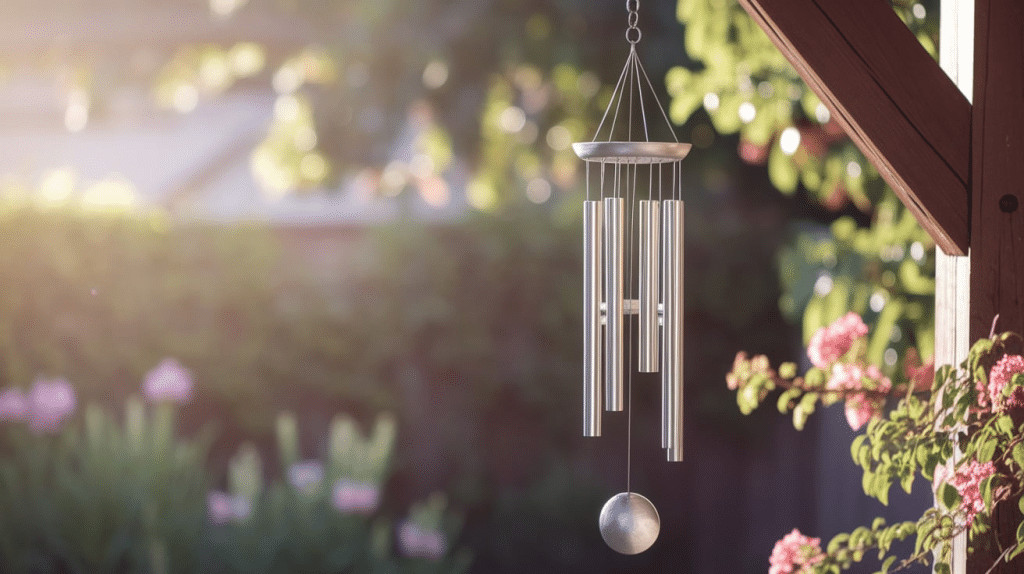Staring at cloudy pool water is like watching your swimming dreams vanish into a foggy haze. One day your pool sparkles like liquid crystal, and the next it looks like someone poured milk into it. Frustrating, right?
The culprits behind murky pool water are often hiding in plain sight—from overworked filters to chemical chaos, uninvited contaminants, and nature’s surprises. Understanding what turns clear water cloudy is your first step toward resolving the issue.
Let’s cut through the murkiness and pinpoint exactly what’s happening in your backyard oasis.
Soon you’ll know not just what caused your crystal-clear water to disappear, but exactly how to bring it back—and keep it that way all season long.
The 4 Main Causes of Cloudy Pool Water
Nothing ruins a refreshing swim quite like murky, hazy pool water. When your once-clear swimming pool turns foggy, it signals an underlying issue that needs to be addressed—fast.
Most pool owners face this common problem at some point. The good news? Once you know what’s causing the cloudiness, fixing it becomes much simpler. Let’s look at the four main culprits behind this annoying pool problem:
- Poor Filtration Systems: When your pool’s filter can’t properly clean the water, tiny particles stay suspended instead of being removed. This occurs due to clogged filters, insufficient running time, or outdated equipment that requires replacement.
- Chemical Balance Problems: Your pool requires the correct balance of chemicals to remain clear. Too little sanitizer, wrong pH levels, or calcium issues can quickly turn clear water cloudy. Testing your water regularly helps catch these issues early.
- Outside Contaminants: Everything from body oils, sunscreen, and cosmetics to pollen, dust, and yard waste can cloud your pool water. Heavy use (such as pool parties) often leads to the introduction of more contaminants at once.
- Weather and Environmental Factors: Rain, wind, and sun affect your pool’s clarity. Strong sun breaks down chlorine quickly, while storms bring in dirt and change your water chemistry almost overnight.
Understanding which factor is affecting your pool is the first step to fixing it. In the following sections, we’ll show you how to identify your specific issue and the exact steps to make your pool crystal clear again.
That Mysterious Haze: Decoding What Your Cloudy Water is Telling You
Your pool water speaks its language—you just need to know how to listen. The type of cloudiness you see offers clues about what’s wrong with your pool.
White or gray haziness often indicates chemical issues or small particles suspended in the water. When you notice this kind of murkiness, check your chemical levels first, as it’s typically a sign that your chlorine or pH levels need adjustment.
Yellow or brown tints suggest the presence of organic matter, such as leaves, dirt, or dead algae. This type needs thorough filtering and possibly a good pool floor cleaning.
Green cloudiness is almost always caused by algae, a problem that requires prompt action before it worsens. If you see green, prepare to shock your pool and run your filter continuously.
Pool water often shifts throughout the day. Morning cloudiness may clear by afternoon as the sun burns off some of the chemicals. If your pool looks worse in the evening, bather loads and dropping chlorine levels may be to blame.
Chemical Imbalances That Create Cloudiness
Pool chemistry can seem complex, but understanding a few key items will help keep your water clear.
The balance of chemicals in your swimming pool works like a carefully tuned system. When one part becomes out of sync, it affects everything else, often manifesting as cloudy water.
Learning to read these chemical signs can save you time and keep your pool swimmable all season long.
1. Chlorine Concerns
Your pool needs enough chlorine to kill bacteria and break down waste, but not so much that it irritates swimmers. When levels drop too low, organic matter builds up, making water hazy. Test chlorine twice weekly during summer, making sure it stays between 1-3 ppm.
If you smell strong “pool smell,” that’s not good chlorine but rather combined chlorine (chloramines), which doesn’t clean well and causes cloudiness. A pool that works right shouldn’t smell strongly of chemicals.
2. pH Problems
pH affects how well your chlorine works. When pH climbs too high (above 7.8), chlorine becomes less useful, leaving your pool open to cloudiness. Low pH (below 7.2) makes chlorine work too quickly, burning it off before it can do its job.
Both situations lead to the same result: murky water. Most test kits show pH levels, which should stay between 7.4-7.6 for best results.
3. Calcium and Total Alkalinity
High calcium in your water creates white, cloudy conditions and can form scaling on pool walls. Low calcium levels make water more likely to pull minerals from concrete or stone, potentially damaging pool surfaces.
Total alkalinity works as a buffer for pH, keeping it from changing too quickly. When alkalinity falls too low, your pH fluctuates significantly, making it difficult to maintain water clarity.
Filtration System Failures and Solutions
Your filter is the unsung hero of pool clarity. Without good filtration, no amount of chemicals will keep water clear for long.
Sand filters trap dirt particles between tiny sand grains. They need backwashing when pressure rises 8-10 psi above normal. Most sand needs changing every 5-7 years.
Cartridge filters catch smaller particles but clog more easily. They require washing with a hose every 2-4 weeks during the swimming season. Deep clean with cartridge cleaner twice yearly.
DE (diatomaceous earth) filters catch the tiniest particles but need the most care. Adding fresh DE after backwashing is critical—many cloudy pool issues with DE filters happen because owners forget this step.
The pump must run for a sufficient amount of time each day to push all pool water through the filter at least once. For most pools, this means 8-12 hours of daily swimming during swim season, with shorter hours in cooler months.
Contamination Sources Making Your Pool Cloudy
Everything that enters your pool can impact water clarity. Knowing the main troublemakers helps you stop them.
Your pool is constantly under attack from various contaminants. Some you can see, others work invisibly until they’ve created a serious cloudiness problem.
Understanding these sources helps you fight back against hazy water before it ruins your swim time.
1. Human Contributions
What swimmers bring in makes a huge impact on water quality:
- Body oils naturally wash off during swimming
- Hair products, including gel, spray, and conditioner
- Makeup that hasn’t been fully removed
- Sunscreen (especially non-water-resistant types)
- Sweat and other bodily fluids
These items mix with chlorine, creating compounds that cloud the water. A quick shower before swimming can dramatically reduce these problems. Pool rules about rinsing off aren’t just for show—they genuinely help maintain clean water.
2. Environmental Factors
Nature constantly sends unwanted guests into your pool:
- Pollen (especially heavy in spring)
- Dust and dirt carried by wind
- Lawn fertilizers and treatments
- Nearby construction dust
- Insects and small debris
Using a good pool cover when the pool isn’t in use blocks these invaders. Strategic landscaping and fence placement can also reduce the amount of debris that blows into your water.
3. Plant Material
Plant matter quickly breaks down in pool water, causing discoloration and cloudiness:
- Tree leaves create brown “tea” as they decompose
- Grass clippings from nearby mowing
- Flower petals and seeds
- Pine needles (which resist breaking down)
- Algae spores carried by wind
Regular skimming prevents plant material from sinking and staining. Consider trimming back trees that hang over the pool area, and maintain a plant-free zone of at least 2-3 feet around the pool edge.
4. Algae Development
Algae is the enemy of clear pool water. It starts microscopically small:
- Initial growth is invisible to the naked eye
- First sign is slightly hazy water with no obvious color
- Water may feel slippery or have a slight smell
- Surfaces may feel slick before any visible growth appears
- Left untreated, it quickly becomes a green, cloudy mess
Weekly brushing of pool walls and floor, even when they look clean, prevents algae from establishing strong footholds. Maintaining proper chlorine levels, especially after rain or heavy pool use, helps prevent algae from taking hold.
Regular testing and maintenance targeting these specific contamination sources will help keep your pool water sparkling clear throughout the swimming season.
Step-by-Step Clearing Process for Any Cloudy Pool
Fixing cloudy water is most effective with a planned approach. With the right approach, you can transform murky water into crystal clear perfection. Let’s break this down into manageable steps that anyone can follow.
Step 1: Test Your Water Chemistry
Start by testing all key water parameters. This foundation step cannot be skipped. Use a reliable test kit to measure:
- Free chlorine (aim for 1-3 ppm)
- pH (target 7.4-7.6)
- Total alkalinity (80-120 ppm ideal)
- Calcium hardness (200-400 ppm)
Fix each value that’s outside its proper range, working in this order: alkalinity first, pH second, and chlorine last. This sequence matters because each adjustment affects the others.
Step 2: Clean Your Filter System
Your filter can’t work properly if it’s dirty or damaged. Based on your filter type:
- For sand filters: Backwash until water runs clear, then rinse. Check the sand – if it’s over 5 years old or clumped together, replace it.
- For cartridge filters: Remove and spray thoroughly with a garden hose, focusing on the pleats. Soak overnight in filter cleaner if it’s been more than 2 months since deep cleaning.
- For DE filters: Backwash, then add fresh DE powder (1 lb per 10 square feet of filter area).
Run your pump constantly for the next 24 hours to maximize water circulation.
Step 3: Apply Pool Clarifier
If your water still lacks sparkle after fixing chemicals and cleaning the filter, it’s time to add a clarifier. This product works by gathering tiny particles together so your filter can catch them.
Add the clarifier at night when the pool isn’t being used. Follow package instructions for dosing – more isn’t better! Keep the filter running continuously for 24 hours after adding clarifier.
Step 4: Shock When Necessary
For severely cloudy water or if you suspect bacterial growth, shocking is necessary. Choose a shock treatment based on your pool type (chlorine or non-chlorine).
Add shock at dusk or night to prevent the sun from burning it off. Use 1 pound per 10,000 gallons for normal shock treatment, or double that for very cloudy conditions.
Wait at least 8 hours before swimming, and keep filtering continuously.
Step 5: Use Flocculant for Severe Cases
When you need clear water quickly, flocculant (often called “floc”) can help. Unlike clarifiers that work with your filter, floc drops all particles to the floor for vacuuming.
Turn off your filter, add floc according to package directions, and circulate for 2 hours. Then shut off the pump and let the pool sit undisturbed for 8-12 hours. The water will look worse before it gets better!
Step 6: Monitor and Maintain
After your clearing method has had time to work, test the water again. Make small adjustments to maintain proper chemistry. Keep the pump running longer than usual (10-12 hours daily) until water clarity is fully restored.
Take photos each day to track your progress – seeing the improvement helps maintain motivation through the process.
Prevention: Keeping Your Pool Crystal Clear Year-Round
The best way to fix cloudy water is to stop it from happening. A good pool care routine isn’t hard, but it must be steady.
Weekly tasks make the biggest difference: checking chemicals, cleaning skimmer baskets, brushing walls and steps, and making sure the filter runs properly.
Monthly duties include deep filter cleaning, checking total alkalinity and calcium hardness, and inspecting equipment for signs of wear.
Using a pool cover can cut down on cleaning time by 50% or more, as it keeps out leaves, dirt, and reduces chemical loss due to sun exposure.
Many pool owners find that using weekly pool cleaning tools and quarterly pro service gives them the best mix of cost savings and clear water with minimal effort.
Wrapping It Up!
Clear pool water isn’t magic—it’s a result of science and consistency. When cloudiness appears, it signals a specific need in your pool. Please pay attention to these warnings instead of fighting against them.
Stay on top of filtration, keep chemicals balanced, guard against external contaminants, and consider how weather affects your water. A few minutes of maintenance each week saves hours of cleanup later.
Your reward? Walking into your backyard to find an invitation—not a puzzle—waiting in your pool. Crystal clear water is ready whenever you want to dip in.
No more postponed swims or disappointed guests. Just the pure joy of plunging into clear water, exactly when you want it.

